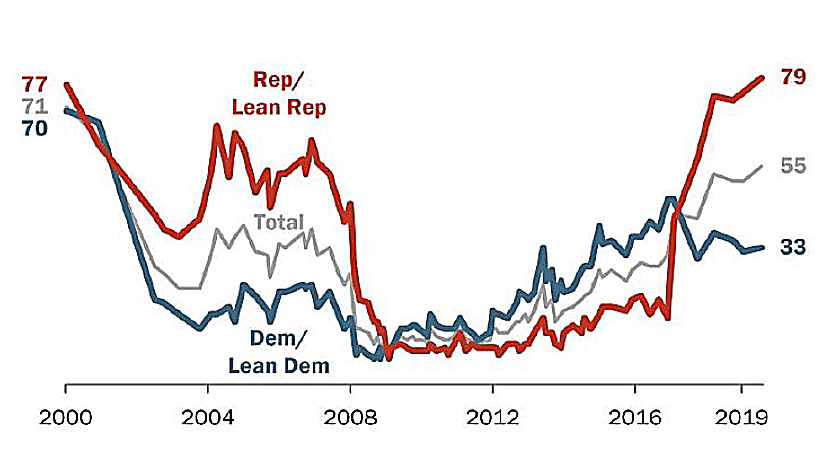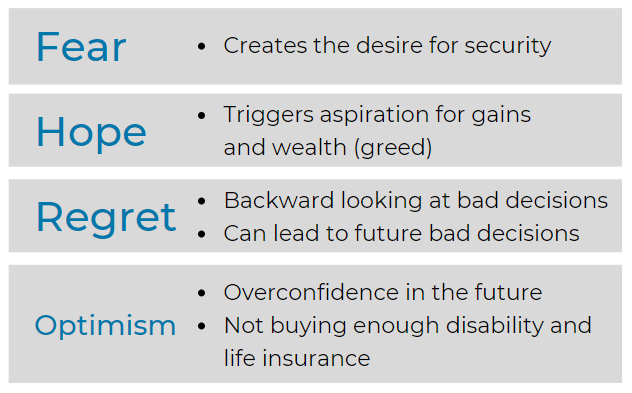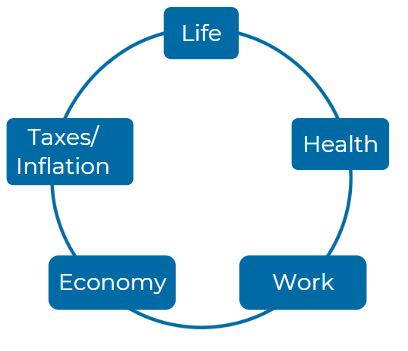Healthcare Provider Update: Healthcare Provider for PepsiCo PepsiCo's primary healthcare provider for employee health benefits is the UnitedHealthcare network, which offers a range of healthcare services and insurance plans for PepsiCo employees. Potential Healthcare Cost Increases in 2026 In 2026, PepsiCo and its employees may face notable increases in healthcare costs due to a combination of factors influencing the Affordable Care Act (ACA) marketplace. Insurance premiums are projected to rise significantly, with some states seeing hikes upwards of 60%, primarily driven by the expiration of enhanced federal premium subsidies. Additionally, the rising costs of medical services and pharmaceuticals are contributing to overall healthcare inflation, with insurers reporting anticipated increases in claims expenses. This perfect storm could potentially lead to out-of-pocket costs skyrocketing for consumers, creating substantial financial pressures. Click here to learn more
Featured Video
Articles you may find interesting:
- Corporate Employees: 8 Factors When Choosing a Mutual Fund
- Use of Escrow Accounts: Divorce
- Medicare Open Enrollment for Corporate Employees: Cost Changes in 2024!
- Stages of Retirement for Corporate Employees
- 7 Things to Consider Before Leaving Your Company
- How Are Workers Impacted by Inflation & Rising Interest Rates?
- Lump-Sum vs Annuity and Rising Interest Rates
- Internal Revenue Code Section 409A (Governing Nonqualified Deferred Compensation Plans)
- Corporate Employees: Do NOT Believe These 6 Retirement Myths!
- 401K, Social Security, Pension – How to Maximize Your Options
- Have You Looked at Your 401(k) Plan Recently?
- 11 Questions You Should Ask Yourself When Planning for Retirement
- Worst Month of Layoffs In Over a Year!
- Corporate Employees: 8 Factors When Choosing a Mutual Fund
- Use of Escrow Accounts: Divorce
- Medicare Open Enrollment for Corporate Employees: Cost Changes in 2024!
- Stages of Retirement for Corporate Employees
- 7 Things to Consider Before Leaving Your Company
- How Are Workers Impacted by Inflation & Rising Interest Rates?
- Lump-Sum vs Annuity and Rising Interest Rates
- Internal Revenue Code Section 409A (Governing Nonqualified Deferred Compensation Plans)
- Corporate Employees: Do NOT Believe These 6 Retirement Myths!
- 401K, Social Security, Pension – How to Maximize Your Options
- Have You Looked at Your 401(k) Plan Recently?
- 11 Questions You Should Ask Yourself When Planning for Retirement
- Worst Month of Layoffs In Over a Year!
U.S. Initial Jobless Claims, Per Week

Total U.S. Nonfarm Payrolls

GDP Annualized Growth Rate

During the last 75.75 years (since 1945) there have been 190 declines of 5% or greater.

Sources: Standard & Poor’s Corporation; Copyright 2020 Crandall, Pierce & Company
The Market's Reaction to a Financial Crisis
Cumulative total return of a balanced strategy: 60% stocks, 40% bonds

Indices are not available for direct investment. Their performance does not reflect the expenses associated with the management of an actual portfolio. Past performance is not a guarantee of future results. Not to be construed as investment advice. Returns of model portfolios are based on back-tested model allocation mixes designed with the benefit of hindsight and do not represent actual investment performance. See the “Balanced Strategy Disclosure and Index Descriptions” pages in the Appendix for additional information.


data-hs-cos-general-type='widget' data-hs-cos-type='module'>
Consider these five Elements:
What are the key steps an employee needs to take to prepare for retirement from PepsiCo, and how do these steps ensure that they maximize their benefits and entitlements?
Preparing for Retirement: Employees preparing for retirement from PepsiCo need to understand their retirement benefits, estimate their financial needs, and officially inform PepsiCo of their decision to retire. These steps are vital to ensure they maximize their benefits, including pensions, 401(k) plans, and retiree healthcare. The PepsiCo Savings and Retirement Center at Fidelity helps guide employees through this process, ensuring they make well-informed decisions(PepsiCo_October 2022_Ge…).
In what ways can PepsiCo employees navigate the complexities of their pension options, and what considerations should they have in mind when deciding between a lump sum and annuity?
Navigating Pension Options: PepsiCo employees can choose between a lump sum or an annuity for their pension benefits. When deciding, they should consider personal circumstances, such as life expectancy and financial needs. Employees can use the NetBenefits platform to estimate pension values at different retirement dates and consult financial counselors through Healthy Money for personalized advice(PepsiCo_October 2022_Ge…).
How does the PepsiCo Retiree Health Care Program function after retirement, and what criteria must be met for an employee to effectively enroll and maintain this coverage?
Retiree Health Care Program: PepsiCo offers a Retiree Health Care Program available until employees reach age 65, after which coverage transitions to the Via Benefits marketplace. Employees must actively enroll within 31 days of retirement to maintain coverage, or defer enrollment if preferred. The Retiree Health Care Contribution Estimator helps estimate future costs(PepsiCo_October 2022_Ge…)(PepsiCo_October 2022_Ge…).
How do the Automatic Retirement Contributions (ARC) at PepsiCo enhance an employee's retirement savings strategy, and what options do employees have to manage their ARC investments?
Automatic Retirement Contributions (ARC): Employees who receive ARC can manage their investments through NetBenefits. These contributions are automatically added to their retirement savings, enhancing long-term financial security. Employees can review and adjust their investment options to align with their retirement strategy(PepsiCo_October 2022_Ge…).
For employees aging 50 and over, what catch-up contribution options does PepsiCo provide to help with their 401(k) savings, and how can they take advantage of these benefits in their retirement planning?
Catch-Up Contributions: PepsiCo employees aged 50 and above can contribute additional amounts to their 401(k) plans under the catch-up contribution option. This benefit allows employees to boost their retirement savings, helping them prepare more effectively for retirement(PepsiCo_October 2022_Ge…).
What resources are available through PepsiCo for employees looking to calculate their retirement expenses, and how do these tools help in setting realistic financial goals for retirement?
Retirement Expense Calculators: PepsiCo provides tools like the Fidelity Planning & Guidance Center, which helps employees estimate retirement expenses. This tool includes health care costs, mortgage payments, and other potential retirement expenses, enabling employees to set realistic financial goals(PepsiCo_October 2022_Ge…).
How should employees at PepsiCo approach Social Security benefits when planning for retirement, and what role does the company play in facilitating their understanding of these benefits?
Social Security Benefits: Employees approaching retirement should consider when to start Social Security benefits. PepsiCo provides guidance through Healthy Money, helping employees understand how Social Security fits into their overall retirement strategy(PepsiCo_October 2022_Ge…).
What impact does health care coverage have on retired employees' finances, and how can PepsiCo retirees effectively use the Retiree Health Care Contribution Estimator to prepare for future health costs?
Retiree Health Care Contribution Estimator: Health care can significantly impact a retiree's budget. The Retiree Health Care Contribution Estimator is a tool PepsiCo retirees can use to prepare for future health costs. It helps employees estimate their contributions and explore different plan options to manage their post-retirement health care expenses(PepsiCo_October 2022_Ge…).
How can employees get in touch with the appropriate resources to learn more about PepsiCo’s retirement benefits, and what specific contact information should they keep handy during this process?
Contact Information: To learn more about PepsiCo's retirement benefits, employees should contact the PepsiCo Savings and Retirement Center at Fidelity at 1-800-632-2014. Additionally, they can access resources on NetBenefits or consult Healthy Money counselors for personalized financial guidance(PepsiCo_October 2022_Ge…).
What are the implications of interest rate fluctuations on pension benefit calculations at PepsiCo, and how should employees factor these rates into their retirement planning decisions? These questions encourage a comprehensive understanding of the various aspects of retirement planning specific to PepsiCo, as well as consideration for personal financial management.
Interest Rate Fluctuations and Pension Calculations: PepsiCo employees considering a lump sum pension payout should be aware that lump sum values are inversely related to interest rates. A higher interest rate results in a lower lump sum payout, so employees should monitor interest rate trends when planning their pension distribution(PepsiCo_October 2022_Ge…)(PepsiCo_October 2022_Ge…).




















-2.png?width=300&height=200&name=office-builing-main-lobby%20(52)-2.png)









.webp?width=300&height=200&name=office-builing-main-lobby%20(27).webp)


-2.png)









.webp)